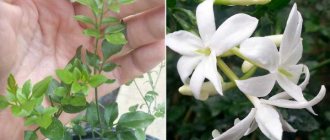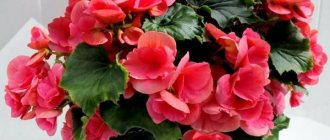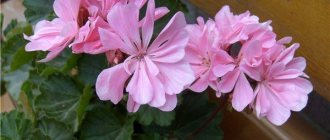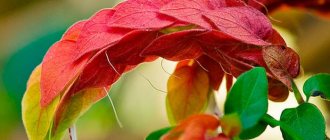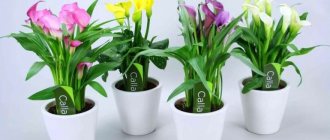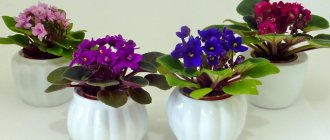Types of flowers and their descriptions
In their native Latin America, bougainvilleas are represented by 14 species, most of which grow in the mountainous regions of Brazil. And some types of bougainvillea have firmly taken root in human homes, becoming worthy potted crops. Most often they are presented:
- Bougainvillea beautiful, distinguished by elongated flowers framed by lilac-colored bracts, and most often grown indoors as an hanging plant;
- Aster gold , which is characterized by double bracts of orange and red-orange shades;
- Bougainvillea glabra (smooth), characterized by long and abundant flowering, in which its bracts acquire apricot, pink, lemon and salmon colors;
- Astro pink , which also blooms very profusely with pink-coral bracts;
- Bougainvillea peruviana, which has the ability to bloom luxuriantly several times during the season, for which it is pruned;
- California gold, distinguished by large bracts of a radical yellow color, which gradually lighten over time;
- Black India Red, standing out with its rich purple-crimson bracts against a background of dark green leaves.
Did you know? In addition to its decorative qualities, bougainvillea is famous in its homeland for its ability to fight diseases of the upper respiratory tract, as well as hepatitis, hypotension and diabetes.
Bougainvillea: botanical description
Bougainvilleas belong to the Nyctaginaceae family; their ancestral home is the South American semi-deserts and foothills. The genus was named after the Frenchman Antoine de Bougainville. This remarkable historical figure is known for organizing the first sea circumnavigation expedition for his homeland. But he was not only, and not even so much a traveler, as a warrior, scientist, and politician! Bougainville was well acquainted with the notorious Madame Pompadour; the thinkers Diderot and Rousseau were fascinated by his activities. It is all the more surprising that he himself stated: “I will remain in history thanks to the flower!” - How I looked into the water!
There are not many species in the genus - only about 15. The appearance of all bougainvilleas is variable: they can look like shrubs, small trees and even vines! Moreover, they are precisely vines, but if the shoots are pruned in time, they easily form a crown resembling a bush or tree.
We have already written that bougainvillea growing under normal conditions is always covered with flowers. They wrote it and misled the reader. The fact is that those bright petals that are visible on bougainvillea bushes are actually bracts. The flowers themselves of these plants are tiny, inconspicuous, and yellowish in color. It is the bracts, which remain on the shoots for a long time, that give bougainvilleas their decorative effect.
Most often, the bracts have a purple color of varying intensity and shades, but there are also white, cream, and yellow... Breeders have developed such a variety of colors that you will not find in nature!
Types of domestic bougainvillea
Since we're talking about breeders, let's talk about the species diversity of bougainvillea. Initially, botanists and flower growers adapted two species to exist in human dwellings: B. naked and B. remarkable . A little later they were joined by B. peruviana . Almost all varieties and hybrids of modern indoor bougainvillea are variations or derivatives of these three species.
The varietal diversity of the flower is amazing! Breeders have created plants with different colors of bracts, with double or simple bracts, with pubescent or bare leaves. Hybrids with variegated foliage and double bracts are becoming popular. Work is also being carried out in the direction of creating specimens that would not be prone to branching, easily maintaining the shape of the tree.
Plant size does not escape the attention of breeders. Cultivars have been created that have a very compact but reduced crown. These varieties resemble tiny, graceful bonsais.
Reproduction methods at home
You can propagate this plant at home in three ways:
- Seeds that are quite easy to use, but very problematic to purchase, since indoor bougainvillea does not produce seeds, and purchasing seeds in a retail chain is quite expensive. After soaking for four hours in a growth stimulator, the seeds are planted in loose, fertile soil in winter, the container is covered with film and kept at a temperature of at least 28 degrees in good light until seedlings emerge, which occurs no earlier than after 2-3 months.
- Using not completely lignified cuttings 7–10 cm long, taken from the apical part of the plant.
- By means of a layering, which in the form of a long young shoot that has not yet lignified, is strengthened in the fall with a pin in a container with prepared soil, standing next to the pot where the mother flower grows. The place where the shoot comes into contact with the soil is slightly cut. After the shoot takes root in this place, which usually occurs within a month, the shoot is separated from the mother plant with pruning shears.
Important! The plant takes root most quickly if the container with soil is slightly heated from below.
Bougainvillea - a tropical beauty in the Old World
Two centuries ago, the French navigator Louis Antoine de Bougainville and naturalist Carnerson gave Europe an evergreen flowering plant, immortalizing the name of the traveler in the name. Bougainvillea, a rainforest native from Brazil, is beautiful, but a lady with character.
Conditions for keeping bougainvillea
A tropical plant in nature is represented by small trees, shrubs and vines. Several varieties have taken root in the culture, which allowed breeders to domesticate the plant and create hybrids. Bougainvilleas are valued for their decorative bracts - modified leaves that are located around a small inflorescence. The framing leaves are painted in bright shades of lilac. In culture, the palette of colors is inexhaustible. The tropicana settled on window sills, in greenhouses and winter gardens.
Agricultural technology requirements:
- temperature conditions - growing season at temperatures above 120 C, flowering requires 21-270 C, dormancy at 5-10, while short exposure to zero temperature is destructive;
- dry sunny weather without prolonged rains;
- absence of drafts and strong wind;
- watering abundantly with soft, settled water, but without stagnant excessive moisture;
- spacious room, comfortable accommodation;
If the maintenance conditions are not met, bougainvillea stops blooming and sheds its leaves.
Bougainvillea, propagation at home
In native rainforests, butterflies and calibri birds carry plant seeds throughout the forest. Once in favorable conditions, a sprout appears. All vines in the internodes are capable of taking root, and the branch takes root, a layer appears, which grows over time.
In cultural breeding they use:
- seed propagation;
- cuttings;
- propagation by rooted layering.
For hybrids, vegetative propagation retains the resulting decorative properties completely. It is difficult to obtain seeds at home and they are very small and are in boxes.
Prepare a sterile substrate from peat and sand in equal parts. Before sowing, soak the seeds in a growth stimulator. Organize bottom heating of the container for seedlings. The substrate temperature should be 27-300 C, seedlings will appear in 2-3 months. Therefore, the bowl in which bougainvillea develops from seeds should be covered from above to prevent the soil from drying out, but should be regularly ventilated and moistened with a fine spray over the surface. When sowing in winter, the container must be illuminated with a lamp located at a distance of 25 cm from the soil surface.
Cuttings are used in the spring and during the summer months. Woody shoots are suitable. The green stalk is cut diagonally under the bud. The operation is performed under sterile conditions. After drying the cut a little and removing the lower leaves, treat the cut with a root former.
The cutting mixture must be sterile:
- turf land – 35%;
- leaf soil – 35%;
- peat – 20%;
- quartz sand – 10%.
Lower the stem to the second bud into the substrate, install a greenhouse over it with a temperature of 250, ventilate and keep the soil moist. In a month, roots will appear and the cutting is ready to be transferred to a permanent bowl.
Another way to propagate bougainvillea is by cuttings germinated until callus forms in water. The plant, ready for rooting, is planted immediately in the pot. In this case, increased humidity around the top of the cuttings is important. Germination in water is not always possible. For young plants, you need to add sand to regular soil.
The easiest way to propagate bougainvillea is to root a branch, taking advantage of the plant’s ability to produce aerial roots in the internodes. If the bush grows outdoors, rooting a branch is simple; just take an adult twig that has not completely hardened, cut the bark and pin the cuttings into the ground.
Add a mound of earth on top and lift the top. A month and a half will pass and you can carefully remove the bearded branch from the roots, separate it from the main bush and plant it in prepared soil.
The more space, the faster the vine grows. But it will bloom only after the roots fill the entire volume of the earth. Therefore, the container is increased with each transplant, achieving a balance between the growth rate and the number of flowers.
How to root if bougainvillea grows on a windowsill? Then you can select a ripe twig, carefully bend it and lower it into a specially suspended bowl at the level of the cut bark. Otherwise everything is the same.
A more convenient method is shown in the photo. Inside is a layer of wet substrate. After rooting, the branch is cut with pruning shears and transferred to the prepared pot. The upper shell is cut and the roots are arranged without injury.
It is important to remember that no matter how the roots are obtained, they are very delicate and fragile. Transplantation into a new container should be done carefully. The new plant needs to continue to be protected from drying out; the roots are not working yet. Open it gradually, accustoming it to normal contents.
Caring for a young bush
A young plant needs care. Young branches need to be formed; it is possible that outside support will be required. If the bush is healthy, then it begins to bloom quickly. Therefore, it is necessary to create trellises from wire. There are special stands on sale, made of plastic in the form of a lattice.
During the growth process, a tree is usually formed from bare bougainvillea. Beautiful, more used as a vine. A prerequisite for obtaining a beautiful plant is the formation of a crown. Pruning branches after flowering, when they retire, is mandatory. In the spring, when new stems grow, they are shortened, forcing the plant to branch and giving it the desired shape.
During the summer, branches that get out of the composition are also removed. Bougainvillea responds well to pruning. The created bonsai trees are a decoration for any composition.
Transplant the plant into a large container carefully, using soil of the following composition:
- leaf soil - 2 parts;
- turf soil - 2 parts;
- humus – 1 part; sand - 1 part.
A little bit of charcoal and vermiculite wouldn't hurt. Fertilize regularly in summer using universal fertilizer. Water, but do not flood, and the plant will thank you with flowering.
Bougainvillea in the greenhouse - video
Source: https://glav-dacha.ru/bugenvilliya-tropicheskaya-krasavica/
Cutting technology at home
To propagate this plant by cuttings at the very beginning of spring, apical shoots at least 10 cm long are selected on plants at least 5 years old. There should be 2–3 growth buds on the shoots.
Next, the process of preparing and planting cuttings proceeds as follows:
- The leaves on the shoots below are removed completely, and the top ones are reduced by half to reduce the intensity of moisture evaporation during the rooting process.
- During the day, the cuttings should be kept in a solution of “Heteroauxin” or “Kornevin” to activate the formation of roots.
- After this, the cuttings are planted in soil prepared from a mixture of leaf soil and river sand in equal proportions.
- The planted shoot is covered with a glass jar or plastic container and placed in a bright place with a constant temperature of at least +25 degrees.
- Rooting occurs within a month and a half, during which the covering is removed from the cutting only during watering.
- The success of rooting is indicated by the appearance of new leaves on the cuttings.
- After this, the rooted seedling is transplanted into a small pot with a mixture of equal proportions of leaf soil, peat, compost and river sand.
- Growing takes place in a bright place at a temperature of +18 degrees.
- When the shoots reach 5 cm in length, their tops are pinched off.
- After the developed roots have completely entwined the earthen ball, the plant is transferred to a new pot with a diameter of at least 12 cm.
- After this, watering should be regular and abundant, but not excessive to avoid waterlogging of the soil.
Video: Bougainvillea cuttings
Caring for a young bush
A young plant needs care. Young branches need to be formed; it is possible that outside support will be required. If the bush is healthy, then it begins to bloom quickly. Therefore, it is necessary to create trellises from wire. There are special stands on sale, made of plastic in the form of a lattice.
During the growth process, a tree is usually formed from bare bougainvillea. Beautiful, more used as a vine. A prerequisite for obtaining a beautiful plant is the formation of a crown. Pruning branches after flowering, when they retire, is mandatory. In the spring, when new stems grow, they are shortened, forcing the plant to branch and giving it the desired shape.
During the summer, branches that get out of the composition are also removed. Bougainvillea responds well to pruning. The created bonsai trees are a decoration for any composition.
Transplant the plant into a large container carefully, using soil of the following composition:
- leaf soil - 2 parts;
- turf soil - 2 parts;
- humus – 1 part; sand - 1 part.
A little bit of charcoal and vermiculite wouldn't hurt. Fertilize regularly in summer using universal fertilizer. Water, but do not flood, and the plant will thank you with flowering.
Care after cuttings
A full-fledged plant resulting from cuttings requires subsequent care, which is simple, but requires accuracy and systematicity.
Suitable microclimate
The optimal temperature for bougainvillea is in the range of 22 to 30 degrees Celsius during the active period and from 5 to 7 degrees Celsius during the dormant period. This plant cannot withstand temperatures below +4 degrees. But it also does not like excessive heat, so in summer, when the ambient temperature is high, it is recommended to spray it with settled water.
This is all the more useful since bougainvillea prefers high humidity in its habitat.
Important! During the flowering period, flowers should not be sprayed to avoid harming the bracts. At this time, it is better to humidify the air around the plant using a sprayer, a wide container of water installed next to the flower pot, or a special humidifier.
Along with high humidity, this plant also requires bright light, which should not be direct, but diffused. But during the dormant period of bougainvillea, 5 hours of daylight is enough. Pots with plants feel best on window sills facing south or west. In summer, it is useful to take flower pots out into the fresh air, placing them so that direct rays of the sun do not fall on the flowers and leaves.
Watering and fertilizing
During the period of active growth and flowering, the plant needs regular and abundant watering. However, having a mountain origin and the habit of growing in natural conditions on rocky soil, bougainvillea does not tolerate stagnant water. Therefore, if water collects in the pan after watering, it should be removed from there immediately.
During the dormant period, the flower is watered much less frequently - once every couple of weeks. But we should not forget that bougainvillea is afraid of drought no less than stagnant water, so the earthen clod should not be allowed to dry out completely during the dormant period.
In addition to proper watering, this plant also requires regular feeding with fertilizers. It is best to use special mixtures for flowering plants containing high concentrations of iron, potassium and phosphorus. Usually the flower is fed with liquid fertilizers, starting in early spring and ending in mid-autumn. Organic fertilizers are rarely used, since the plant does not tolerate excess nitrogen.
Did you know? Bougainvillea is often called a paper flower because its bracts look like crumpled thin paper of different colors.
Pruning and shaping the bush
In the maintenance and care of bougainvillea, pruning occupies one of the most important places. It creates a decorative attractiveness for the plant and activates its flowering. Pruning is carried out several times throughout the year:
- In the spring, branches that have dried out during the winter, as well as weak-looking shoots, are removed from the plant.
- In summer, inflorescences that have lost their decorative appearance are removed.
- After abundant flowering in the fall, when the bracts lose their attractive appearance, the young shoots of the plant are shortened by a third of the length so that at least 6 buds remain on them. Young shoots that disrupt the harmony of the bush are completely removed. It is recommended not to touch branches older than 3 years, as this causes significant injury to the flower.
Video: Pruning bougainvillea
Before the dormant period begins, the plant can be shaped either as a bush, consisting of many shortened trunks, or as vines, which will climb along supports specially installed next to the pot.
We recommend that you learn how to properly plant indoor flowers in a pot.
Conditions for keeping bougainvillea
A tropical plant in nature is represented by small trees, shrubs and vines. Several varieties have taken root in the culture, which allowed breeders to domesticate the plant and create hybrids. Bougainvilleas are valued for their decorative bracts - modified leaves that are located around a small inflorescence. The framing leaves are painted in bright shades of lilac. In culture, the palette of colors is inexhaustible. The tropicana settled on window sills, in greenhouses and winter gardens.
Agricultural technology requirements:
- temperature conditions - growing season at temperatures above 120 C, flowering requires 21-270 C, dormancy at 5-10, while short exposure to zero temperature is destructive;
- dry sunny weather without prolonged rains;
- absence of drafts and strong wind;
- watering abundantly with soft, settled water, but without stagnant excessive moisture;
- spacious room, comfortable accommodation;
If the maintenance conditions are not met, bougainvillea stops blooming and sheds its leaves.
Possible difficulties
When growing this plant at home, it can be susceptible to diseases and pest attacks in the form of:
- Mold , which is manifested by the appearance of white spots on the leaves, which is provoked by excess humidity and lack of fresh air. To eliminate the problem, it is recommended to improve the ventilation of the room.
- Rotten, affecting the root system. The roots affected by the fungus should be cut off, and the remaining rhizome should be transplanted into a disinfected pot with new soil.
- Aphids , which settle on the underside of the leaf and cause it to discolor, curl and fall off. To combat aphids, insecticides are used, for example, Actellik, as well as a soap solution.
- Mealybug , which damages flowers, buds and pedicels. It is also combated by treating it with a soap solution, after cutting off the affected parts of the flower.
For successful maintenance at home, bougainvillea requires considerable effort on the part of its owner, but it can repay these efforts many times over with extremely lush and long flowering and an impressive exotic appearance.
Reproduction
There are three ways to propagate bougainvillea:
- Seeds;
- Cuttings;
- By layering.
Propagation by seeds
The first method of propagating bougainvillea is quite difficult, since not every gardener can get seeds from warm countries.
If you have bougainvillea seeds, you need to plant them correctly at home. For this purpose, loose soil or peat tablets are used. After planting, the container with the seeds should be kept in a room with a temperature of 25 to 28 degrees. The emergence of seedlings is quite slow.
Propagation by cuttings
Bougainvillea is propagated by cuttings in the spring. Flower growers plant strong and healthy semi-lignified apical cuttings, the length of which ranges from 7 to 10 centimeters.
How to propagate bougainvillea from cuttings?
- After removing the leaves from the cutting, it must be soaked in a special solution that will promote the formation of the root system.
- After half an hour, the cuttings are planted in the ground. Peat tablets can also be used for this purpose.
- After the roots have formed, after several months, the cuttings are planted in separate pots.
Video: bougainvillea cuttings.
Reproduction by layering
In the autumn, layering is used to propagate bougainvillea. Thanks to the elastic branches of the plant, it can be easily bent to the soil. The layer is secured with a metal pin. After the roots appear, the cuttings are cut off from the main plant and transplanted into another pot.
Video: how best to propagate bougainvillea - in water or soil.
Reproduction by air layering
Many will find this method easier than propagating bougainvillea from cuttings at home. It will require a fairly long, young, non-woody shoot. A container for layering with an appropriate substrate is installed next to the pot in which the adult plant grows. The cutting needs to be broken or slightly cut and this part fixed to the ground.
With regular watering and temperature control, bougainvillea will take root within a month and can be separated from the mother tree by simply cutting off the trunk with pruning shears or sharp scissors.
Advice. In order for a rooted plant to quickly form a shape and produce new shoots, its shoots can be pinched. In adult flowers, pruning is used for the same purpose.
A month after rooting, bougainvillea plants, propagated by air layering, can be transplanted to a permanent place or into a new pot.
If you want to buy bougainvillea in a pot
It is better to buy bougainvillea (like any indoor flowers) in stores rather than in markets—indoors create more favorable conditions for flowers. Take your time and carefully inspect the plant: there should be no spots on the leaves and bracts, wet rotting areas, dry tips and, of course, no insect pests. The plant should not be drooping or withering. A strong flower will better withstand a change of environment.
Immediately choose a permanent place for bougainvillea: this plant has a very negative attitude towards change and rearrangement. For this reason, immediately after purchase, it can shed a significant amount of foliage and flowers. There is no need to worry - soon the plant will get used to the new place and quickly recover.
The price of indoor bougainvillea in the store starts from 350 rubles per copy. These are small plants that you have to grow yourself. You can also purchase large adult plants, whose decorative value is high, as well as their financial value. In particular, a tree 160 cm high, which can decorate both a house and a summer cottage, can cost 36,000 rubles. The price of a mature and large bougainvillea in the form of a liana will be half as much - about 15,000 rubles.
If the roots of a newly purchased plant are visible through the drainage holes in the pot, the bougainvillea should be replanted immediately, even though it is blooming. In this case, the flowers will have to be removed.
How to propagate bougainvillea from cuttings
The best planting material can be taken from adult plants that are at least 5 years old. It is better to choose shoots that are at least 10 cm long. In this case, the sprout should have 2-3 buds, and its trunk should be slightly woody. You need to cut the cutting near the lower bud, and remove the leaves next to it.
In order for the tree-like vine to take root better and faster, the cutting should be kept for several hours in water or a growth stimulant, which can be purchased at specialized flower shops. During this time, you can prepare a container or pot with the substrate. Drainage must be laid at the bottom, and soil must be poured on top.
How to root bougainvillea in spring
After planting the cuttings in the ground, the pot must be placed under a film or the shoot must be covered with a jar. The best place for rooting and propagation of bougainilla shoots is a windowsill on the sunny, south side. It must always be under a greenhouse “cap”, which is removed only for watering. The soil should also not be allowed to dry out; it should always be slightly moist.
- In January-March, cut apical cuttings with 2-3 growth buds, remove the lower leaves, cut the upper ones by half the area to reduce moisture evaporation during rooting.
- The cuttings are left in a solution of root or heteroauxin for a day to stimulate future root formation.
- Mix leaf soil with sand and plant the cuttings.
How to take bougainvillea cuttings:
- Cover with a jar or plastic bottle, maintain the air temperature at 20-25°C.
- Rooting takes about 1.5 months.
- Plant the finished seedlings in pots 7-9 cm high, filled with a mixture of peat, sand, leaf soil and compost.
- Grow in a bright place with an air temperature of 18 °C.
- When shoots reach a length of 5 cm, it is necessary to pinch off the tops. When the earthen ball is completely entwined with roots, the plants should be transferred to pots with a diameter of 11-12 cm.
- Water the plants generously, but do not allow the soil to become waterlogged to prevent root rot and mold contamination of the soil.
The root system should develop within a month. Its formation and the fact that the cutting has taken root will be indicated by the appearance of new leaves on the seedling. The strengthened future tree can be transplanted into another pot.
How to root bougainvillea in water
Take the cutting, dip the cut into the root preparation, plant it in moist soil and cover with a jar (it is necessary to ventilate). Or this: kornevin, or a mixture of heteroauxin and zircon. Sometimes a mixture of heteroauxin with vitamin B1 and nicotinic acid.
- For 100 ml of boiled water, heteroauxin 60 mg; vitamin B1 10 mg; nicotinic acid 10 mg. (If B1 and nicotinic acid are in ampoules, then it is necessary to recalculate mg per ml depending on the percentage composition.)
- For 100 ml of boiled water, 20 mg of heteroauxin and 4 drops of zircon. The cuttings are placed in it for a day, then washed with water and placed in clean water. To prevent it from stagnating, add a few pieces of charcoal. Aged until roots appear.
How to root bougainvillea in the ground
- Place pieces of foam plastic at the bottom of a small flowerpot or 0.5 liter plastic glass. It will create an air barrier between the bottom of the container and the soil, thanks to which the water will not stagnate in the ground, and will flow under the foam, and the young roots will feel the moisture and begin to reach for it. In addition, with such a “lining” the cutting will be warm and comfortable.
- Sprinkle nutritious but light soil (a mixture of sand and peat) on top. There is no need to compact it.
- It's good to shed the soil.
- Using a pencil, make a depression and place the cutting in it at an angle of 45 degrees, immersing it along the first lower bud. Press the soil around it tightly.
- Cover the top of the container with a second glass or bag.
- Place it on a warm windowsill, but not in the full sun, but in the shade of another flower pot.
When the soil in the glass is almost completely dry, you will need to moisten it further.
